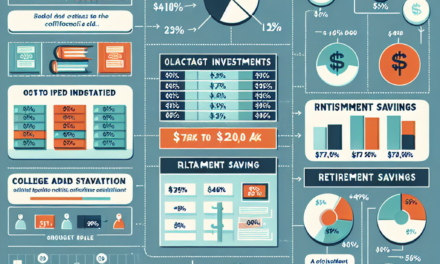“Navigating Turbulence: The Affordable Care Act at a Crossroads”
Introduction
The Affordable Care Act (ACA), a landmark piece of legislation enacted in 2010 to expand healthcare coverage and reduce costs, is currently facing significant challenges that threaten its sustainability and effectiveness. These challenges arise from a combination of political, legal, and economic pressures that have intensified in recent years. Politically, the ACA has been a contentious issue, with ongoing debates and attempts to repeal or modify key provisions. Legally, the act has faced numerous court battles that question its constitutionality and implementation. Economically, rising healthcare costs and market instability have put additional strain on the system, affecting both insurers and consumers. As these challenges converge, the future of the ACA remains uncertain, prompting urgent discussions about the best path forward to ensure accessible and affordable healthcare for all Americans.
Impact Of Political Changes On The Affordable Care Act
The Affordable Care Act (ACA), a landmark piece of legislation enacted in 2010, has been a focal point of political debate in the United States for over a decade. Its primary aim was to expand healthcare coverage, reduce costs, and improve the healthcare delivery system. However, the ACA has faced numerous challenges, particularly as political landscapes shift. Recent political changes have introduced new hurdles that could significantly impact the future of the ACA, affecting millions of Americans who rely on its provisions for their healthcare needs.
One of the most significant challenges the ACA faces is the ongoing political polarization surrounding healthcare reform. With each change in administration, the ACA’s future becomes uncertain. For instance, under the Trump administration, there were concerted efforts to dismantle the ACA, including the elimination of the individual mandate penalty through the Tax Cuts and Jobs Act of 2017. This move weakened one of the ACA’s core mechanisms designed to ensure a balanced risk pool by encouraging healthy individuals to purchase insurance. Consequently, the absence of this mandate has led to increased premiums, as insurers adjust to a potentially sicker insurance pool.
Moreover, the judicial landscape has also played a crucial role in shaping the ACA’s trajectory. Various legal challenges have been mounted against the ACA, with opponents questioning its constitutionality. The most notable case, California v. Texas, reached the Supreme Court, where the ACA narrowly survived. However, the constant threat of legal challenges creates an environment of uncertainty, which can deter insurers from participating in ACA marketplaces and discourage states from expanding Medicaid under the ACA’s provisions.
In addition to these challenges, the political changes at the state level also significantly impact the ACA’s implementation. States have considerable discretion in how they administer Medicaid and establish health insurance exchanges. Some states have embraced the ACA, expanding Medicaid and creating state-based exchanges to increase coverage. In contrast, others have resisted, opting not to expand Medicaid or relying on the federal exchange. This patchwork approach results in disparities in healthcare access and coverage across the country, undermining the ACA’s goal of universal coverage.
Furthermore, the ongoing debate over healthcare costs continues to pose a challenge to the ACA. While the ACA has succeeded in reducing the uninsured rate, healthcare costs remain a pressing issue for many Americans. Political changes often bring shifts in policy priorities, which can affect funding for ACA programs and subsidies that help lower-income individuals afford coverage. As political leaders grapple with budget constraints and competing priorities, the sustainability of these subsidies remains a contentious issue.
Despite these challenges, the ACA has demonstrated resilience, adapting to political and legal pressures over the years. The Biden administration has taken steps to strengthen the ACA, including expanding enrollment periods and increasing subsidies through the American Rescue Plan. These efforts aim to bolster the ACA’s framework and ensure that more Americans have access to affordable healthcare. However, the future of the ACA remains closely tied to the political climate, with each election cycle bringing potential changes that could either fortify or undermine its provisions.
In conclusion, the Affordable Care Act continues to face significant challenges due to political changes at both the federal and state levels. The interplay between legislative actions, judicial rulings, and state-level decisions creates a complex environment that affects the ACA’s implementation and effectiveness. As the political landscape evolves, the ACA’s ability to provide affordable healthcare to millions of Americans will depend on navigating these challenges and adapting to new political realities.
Legal Challenges And Court Rulings Affecting The ACA
The Affordable Care Act (ACA), a landmark piece of legislation enacted in 2010, has been a focal point of legal scrutiny and political debate since its inception. Over the years, the ACA has faced numerous legal challenges that have tested its resilience and adaptability. These challenges have not only shaped the implementation of the law but have also influenced the broader landscape of healthcare in the United States. As the ACA continues to evolve, it is imperative to understand the legal challenges and court rulings that have significantly impacted its trajectory.
One of the most notable legal challenges to the ACA was the 2012 Supreme Court case, National Federation of Independent Business v. Sebelius. This case questioned the constitutionality of the individual mandate, a core component of the ACA that required individuals to purchase health insurance or face a penalty. The Supreme Court upheld the individual mandate as a constitutional exercise of Congress’s taxing power, thereby preserving the ACA’s framework. However, the ruling also allowed states to opt out of the Medicaid expansion, which has led to a patchwork of Medicaid coverage across the country.
In subsequent years, the ACA faced additional legal hurdles, particularly concerning the provision of subsidies to individuals purchasing insurance through federal exchanges. The 2015 Supreme Court case, King v. Burwell, addressed whether subsidies were available to individuals in states that did not establish their own health insurance exchanges. The Court’s decision to uphold the provision of subsidies was a critical victory for the ACA, ensuring that millions of Americans could continue to afford health insurance.
Despite these victories, the ACA has continued to encounter legal challenges, particularly from states and organizations seeking to dismantle or weaken the law. In 2018, a coalition of states led by Texas filed a lawsuit arguing that the ACA was unconstitutional following the elimination of the individual mandate penalty by Congress in 2017. This case, Texas v. United States, reached the Supreme Court in 2020. The Court ultimately dismissed the case on procedural grounds, ruling that the plaintiffs lacked standing to challenge the law. This decision once again preserved the ACA, but it underscored the ongoing legal vulnerabilities the law faces.
Moreover, the ACA’s provisions have been subject to varying interpretations and implementations by different administrations, further complicating its legal landscape. For instance, the Trump administration’s efforts to undermine the ACA through executive actions and regulatory changes have led to additional legal battles. These actions have included attempts to expand the availability of short-term health plans and reduce funding for outreach and enrollment efforts, both of which have faced legal challenges from states and advocacy groups.
As the ACA continues to navigate these legal challenges, its future remains uncertain. The law’s resilience in the face of repeated legal assaults is a testament to its foundational role in the American healthcare system. However, ongoing litigation and potential legislative changes could significantly alter its provisions and impact millions of Americans who rely on its protections and benefits. As such, stakeholders, including policymakers, healthcare providers, and consumers, must remain vigilant and engaged in the ongoing legal discourse surrounding the ACA. By understanding the complexities of these legal challenges and court rulings, they can better advocate for a healthcare system that is equitable, accessible, and sustainable for all.
The Role Of State Governments In ACA Implementation
The Affordable Care Act (ACA), enacted in 2010, has been a pivotal piece of legislation in the United States, aiming to expand healthcare coverage, control healthcare costs, and improve the healthcare delivery system. However, its implementation has faced numerous challenges, particularly at the state level. State governments play a crucial role in the execution of the ACA, as they are responsible for establishing health insurance exchanges, expanding Medicaid, and enforcing various provisions of the law. The effectiveness of the ACA largely depends on how well these state-level responsibilities are managed, which has proven to be a complex and contentious process.
Initially, the ACA envisioned a cooperative federal-state partnership, where states would have the flexibility to tailor their healthcare exchanges to meet the specific needs of their populations. However, this flexibility has led to a patchwork of implementation strategies across the country. Some states embraced the ACA, setting up their own exchanges and expanding Medicaid, while others resisted, opting for federally facilitated exchanges or refusing Medicaid expansion altogether. This divergence has resulted in significant disparities in healthcare access and coverage across states, highlighting the critical role state governments play in the ACA’s success or failure.
Moreover, the decision to expand Medicaid has been one of the most contentious aspects of the ACA at the state level. The Supreme Court’s 2012 ruling made Medicaid expansion optional for states, leading to a divide where some states expanded coverage to low-income individuals, while others did not. This decision has had profound implications for millions of Americans who fall into the “coverage gap,” earning too much to qualify for traditional Medicaid but not enough to afford private insurance. Consequently, the states’ choices regarding Medicaid expansion have become a focal point in the ongoing debate about healthcare reform and the ACA’s future.
In addition to Medicaid expansion, state governments are also responsible for regulating insurance markets and ensuring compliance with ACA provisions. This includes overseeing insurance companies to prevent discriminatory practices, such as denying coverage based on pre-existing conditions, and ensuring that essential health benefits are included in all plans. The capacity and willingness of state governments to enforce these regulations vary widely, affecting the quality and affordability of healthcare coverage available to residents.
Furthermore, political dynamics within states significantly influence ACA implementation. In states where political leadership opposes the ACA, efforts to undermine or repeal the law have been persistent. This opposition can manifest in various ways, such as refusing to establish state-based exchanges, limiting outreach and enrollment efforts, or enacting state laws that conflict with ACA provisions. These political challenges underscore the importance of state governments in shaping the healthcare landscape and the need for ongoing dialogue and negotiation between federal and state authorities.
In conclusion, the role of state governments in the implementation of the Affordable Care Act is both pivotal and complex. The diverse approaches taken by states have led to varying levels of success in achieving the ACA’s goals of expanded coverage and improved healthcare access. As the ACA continues to face significant challenges, understanding the critical role of state governments is essential for evaluating its impact and considering future reforms. The interplay between federal objectives and state-level execution will remain a key factor in the ongoing evolution of healthcare policy in the United States.
Financial Sustainability Of The Affordable Care Act

The Affordable Care Act (ACA), a landmark piece of legislation enacted in 2010, was designed to expand healthcare coverage, reduce costs, and improve the quality of care for millions of Americans. However, as the ACA continues to evolve, it faces significant challenges, particularly concerning its financial sustainability. Understanding these challenges requires a comprehensive examination of the factors that threaten the long-term viability of the ACA and the potential solutions that could address these issues.
To begin with, one of the primary financial challenges facing the ACA is the rising cost of healthcare. Healthcare expenditures in the United States have been increasing at an alarming rate, driven by factors such as the aging population, the prevalence of chronic diseases, and the high cost of medical technologies and prescription drugs. These rising costs place a significant burden on the ACA’s financial structure, as the program relies heavily on federal subsidies to make insurance affordable for low- and middle-income individuals. As healthcare costs continue to rise, the federal government faces increasing pressure to allocate more funds to maintain the program’s affordability, which raises concerns about the sustainability of these subsidies in the long term.
Moreover, the ACA’s financial sustainability is further complicated by the political landscape. Since its inception, the ACA has been a contentious issue, with various administrations and lawmakers proposing changes that could impact its funding and structure. For instance, efforts to repeal or replace the ACA have created uncertainty about the program’s future, making it difficult to implement long-term financial planning. Additionally, changes in political leadership can lead to shifts in healthcare policy priorities, which may affect the allocation of resources to the ACA. This political volatility poses a significant challenge to ensuring the program’s financial stability over time.
In addition to these challenges, the ACA also faces issues related to enrollment and risk pools. The success of the ACA’s financial model depends on a balanced risk pool, where healthy individuals offset the costs of those who require more medical care. However, if enrollment numbers decline or if the risk pool becomes skewed towards individuals with higher healthcare needs, the financial sustainability of the program could be jeopardized. This imbalance could lead to higher premiums, making insurance less affordable and potentially driving more people out of the market, further exacerbating the problem.
Despite these challenges, there are potential solutions that could enhance the financial sustainability of the ACA. One approach is to implement cost-control measures that address the root causes of rising healthcare expenses. This could include promoting preventive care, encouraging the use of generic drugs, and implementing value-based payment models that reward healthcare providers for quality rather than quantity of care. Additionally, expanding Medicaid in states that have not yet done so could increase coverage and reduce uncompensated care costs, thereby alleviating some financial pressure on the ACA.
Furthermore, fostering bipartisan support for the ACA could lead to more stable and predictable funding, allowing for better long-term planning. By working together, policymakers can develop strategies that ensure the program’s financial sustainability while continuing to provide essential healthcare coverage to millions of Americans.
In conclusion, while the Affordable Care Act faces significant financial challenges, understanding these issues and exploring potential solutions is crucial for ensuring its long-term viability. By addressing rising healthcare costs, navigating the political landscape, and maintaining balanced risk pools, the ACA can continue to fulfill its mission of providing affordable and accessible healthcare to all Americans.
Public Opinion And The Future Of The ACA
The Affordable Care Act (ACA), a landmark piece of legislation enacted in 2010, has been a focal point of American healthcare policy for over a decade. Despite its initial promise to expand healthcare coverage and reduce costs, the ACA has faced numerous challenges, both politically and in terms of public opinion. As the United States continues to grapple with the complexities of healthcare reform, the future of the ACA remains uncertain, influenced by shifting public perceptions and ongoing legislative battles.
Public opinion on the ACA has been deeply divided since its inception. Initially, the law faced significant opposition, with critics arguing that it represented an overreach of government authority and imposed undue burdens on businesses and individuals. Proponents, however, lauded the ACA for expanding healthcare access to millions of uninsured Americans and implementing essential consumer protections, such as prohibiting insurance companies from denying coverage based on pre-existing conditions. Over time, public sentiment has gradually shifted, with more Americans recognizing the benefits of the ACA, yet skepticism persists, particularly among those who have experienced increased premiums or limited provider networks.
The political landscape surrounding the ACA has further complicated its trajectory. Since its passage, the ACA has been subject to numerous repeal and replace efforts, primarily led by Republican lawmakers. While these attempts have largely been unsuccessful, they have contributed to a climate of uncertainty, affecting both insurers and consumers. The 2017 Tax Cuts and Jobs Act, which effectively eliminated the individual mandate penalty, marked a significant blow to the ACA, as it removed a key mechanism intended to ensure a balanced risk pool. This legislative change has led to concerns about rising premiums and market instability, further fueling public debate.
In addition to legislative challenges, the ACA faces significant hurdles in the judicial arena. The law has been the subject of multiple lawsuits, with opponents questioning its constitutionality and seeking to dismantle its provisions. The most notable of these cases reached the Supreme Court in 2012, resulting in a decision that upheld the ACA’s individual mandate as a constitutional exercise of Congress’s taxing power. However, subsequent legal challenges continue to threaten the ACA’s viability, with potential implications for millions of Americans who rely on its protections and coverage options.
As the ACA navigates these challenges, its future will likely be shaped by evolving public opinion and political dynamics. The COVID-19 pandemic has underscored the importance of accessible healthcare, potentially bolstering support for the ACA and similar reforms. However, the economic fallout from the pandemic has also intensified debates over healthcare costs and the role of government in providing coverage. In this context, policymakers face the daunting task of addressing these concerns while ensuring the sustainability of the ACA.
In conclusion, the Affordable Care Act stands at a crossroads, with its future contingent upon a complex interplay of public opinion, political maneuvering, and legal battles. As Americans continue to voice their concerns and aspirations for the healthcare system, the ACA’s fate will depend on the ability of lawmakers to navigate these challenges and forge a path forward that balances accessibility, affordability, and quality of care. The coming years will be critical in determining whether the ACA can adapt to meet the evolving needs of the nation or if new reforms will emerge to take its place.
The ACA’s Influence On Healthcare Access And Quality
The Affordable Care Act (ACA), enacted in 2010, has been a pivotal piece of legislation in the United States, fundamentally altering the landscape of healthcare access and quality. Over the years, it has significantly expanded healthcare coverage, providing millions of Americans with access to essential medical services. However, the ACA now faces significant challenges that threaten its ability to continue improving healthcare access and quality.
Initially, the ACA aimed to reduce the number of uninsured Americans by expanding Medicaid eligibility and creating health insurance marketplaces. These measures have been successful to a considerable extent, with the uninsured rate dropping from 16% in 2010 to around 9% in recent years. This expansion of coverage has allowed more individuals to receive preventive care, manage chronic conditions, and access necessary treatments without the fear of financial ruin. Consequently, the ACA has contributed to improved health outcomes for many Americans.
Despite these achievements, the ACA has encountered numerous obstacles that jeopardize its sustainability and effectiveness. One of the primary challenges is the ongoing political opposition that has sought to dismantle or weaken the law. Efforts to repeal the ACA have created uncertainty in the healthcare market, affecting insurers’ willingness to participate in the exchanges and potentially leading to higher premiums for consumers. This political instability undermines the ACA’s goal of providing affordable healthcare options to all Americans.
Moreover, the ACA’s expansion of Medicaid has faced resistance in several states, leaving millions of low-income individuals without access to coverage. While the federal government initially covered the costs of Medicaid expansion, some states have opted not to participate, citing budgetary concerns and ideological opposition. This has resulted in a coverage gap, where individuals earn too much to qualify for traditional Medicaid but too little to afford marketplace insurance. Addressing this gap is crucial to ensuring equitable access to healthcare across the nation.
In addition to political and coverage challenges, the ACA must also contend with issues related to healthcare quality. While the law has made strides in promoting value-based care and improving patient outcomes, disparities in healthcare quality persist. Factors such as geographic location, socioeconomic status, and race continue to influence the quality of care individuals receive. The ACA’s provisions for quality improvement, such as the establishment of Accountable Care Organizations and the Hospital Readmissions Reduction Program, have made progress, but more work is needed to achieve uniform quality across the healthcare system.
Furthermore, the rising cost of healthcare remains a significant concern. Although the ACA implemented measures to control costs, such as reducing Medicare payments to providers and encouraging the use of generic drugs, healthcare spending continues to outpace inflation. This trend threatens the affordability of healthcare for both individuals and the government, necessitating further reforms to address cost containment.
In conclusion, while the Affordable Care Act has made substantial contributions to improving healthcare access and quality in the United States, it faces significant challenges that must be addressed to ensure its continued success. Political opposition, coverage gaps, disparities in healthcare quality, and rising costs all pose threats to the ACA’s objectives. To overcome these challenges, policymakers must work collaboratively to strengthen the law, expand coverage, and enhance the quality and affordability of healthcare for all Americans. Only through sustained effort and innovation can the ACA fulfill its promise of a more equitable and effective healthcare system.
Technological Advancements And Their Effect On The ACA
The Affordable Care Act (ACA), a landmark piece of legislation aimed at expanding healthcare access and reducing costs, has faced numerous challenges since its inception. In recent years, technological advancements have emerged as both a boon and a bane for the ACA, presenting significant challenges that could reshape its future. As technology continues to evolve at a rapid pace, it is crucial to examine how these advancements are impacting the ACA and the broader healthcare landscape.
To begin with, one of the most significant technological advancements affecting the ACA is the rise of telemedicine. Telemedicine has revolutionized the way healthcare is delivered, offering patients the convenience of virtual consultations and remote monitoring. This technology has the potential to increase access to healthcare services, particularly for individuals in rural or underserved areas. However, the integration of telemedicine into the ACA framework presents challenges related to reimbursement policies, regulatory compliance, and ensuring equitable access for all patients. As telemedicine becomes more prevalent, policymakers must address these issues to ensure that the benefits of this technology are fully realized within the ACA’s structure.
Moreover, the proliferation of electronic health records (EHRs) has transformed the healthcare industry, offering the promise of improved patient care and streamlined operations. EHRs facilitate the sharing of patient information among healthcare providers, enhancing coordination and reducing the likelihood of medical errors. Nevertheless, the widespread adoption of EHRs has also raised concerns about data privacy and security. The ACA must navigate these challenges by implementing robust data protection measures to safeguard patient information while promoting the seamless exchange of health data.
In addition to telemedicine and EHRs, artificial intelligence (AI) is another technological advancement that is reshaping the healthcare landscape. AI has the potential to revolutionize diagnostics, treatment planning, and patient management by analyzing vast amounts of data to identify patterns and make predictions. While AI holds promise for improving healthcare outcomes and reducing costs, its integration into the ACA framework poses challenges related to ethical considerations, regulatory oversight, and the potential for bias in AI algorithms. Policymakers must carefully consider these issues to ensure that AI is used responsibly and effectively within the ACA.
Furthermore, the rise of wearable health technologies, such as fitness trackers and smartwatches, has empowered individuals to take a more active role in managing their health. These devices can provide valuable data on physical activity, heart rate, and other health metrics, offering insights that can inform personalized healthcare interventions. However, the integration of wearable technology into the ACA presents challenges related to data accuracy, privacy concerns, and the potential for health disparities among different populations. To address these challenges, the ACA must establish guidelines for the use of wearable technology in healthcare and ensure that all individuals have access to these tools.
In conclusion, while technological advancements offer significant opportunities to enhance the ACA and improve healthcare delivery, they also present a range of challenges that must be addressed. As telemedicine, EHRs, AI, and wearable technologies continue to evolve, policymakers must navigate complex issues related to reimbursement, data privacy, ethical considerations, and equitable access. By addressing these challenges, the ACA can harness the power of technology to achieve its goals of expanding access to healthcare and reducing costs, ultimately improving the health and well-being of all Americans.
Q&A
1. **Question:** What are some of the legal challenges currently facing the Affordable Care Act (ACA)?
– **Answer:** The ACA faces legal challenges related to its individual mandate, Medicaid expansion, and coverage requirements, with some cases reaching the Supreme Court.
2. **Question:** How has the political landscape affected the implementation of the ACA?
– **Answer:** Political opposition, particularly from Republican lawmakers, has led to attempts to repeal or undermine the ACA, affecting its implementation and stability.
3. **Question:** What financial challenges does the ACA encounter?
– **Answer:** The ACA faces financial challenges such as rising premium costs, insurer withdrawals from marketplaces, and funding uncertainties for subsidies.
4. **Question:** How has public opinion influenced the ACA’s challenges?
– **Answer:** Public opinion is divided, with some supporting the ACA for expanding coverage and others criticizing it for increasing costs, influencing political and legislative actions.
5. **Question:** What impact do state-level decisions have on the ACA?
– **Answer:** State-level decisions, such as opting out of Medicaid expansion or creating state-specific marketplaces, significantly impact the ACA’s effectiveness and coverage reach.
6. **Question:** How do changes in healthcare policy affect the ACA?
– **Answer:** Changes in healthcare policy, including executive orders and regulatory adjustments, can alter the ACA’s provisions, affecting coverage and compliance requirements.
7. **Question:** What role do healthcare providers play in the challenges facing the ACA?
– **Answer:** Healthcare providers face challenges with reimbursement rates and regulatory compliance under the ACA, impacting their support and participation in ACA-related programs.
Conclusion
The Affordable Care Act (ACA) faces significant challenges due to a combination of political, legal, and economic factors. Politically, ongoing debates and attempts to repeal or modify the ACA have created uncertainty about its future. Legally, various court cases continue to challenge its provisions, potentially undermining its framework. Economically, rising healthcare costs and insurance premiums pose sustainability issues, while disparities in coverage and access persist. These challenges necessitate comprehensive policy adjustments and bipartisan cooperation to ensure the ACA’s objectives of expanding healthcare access and affordability are met.





